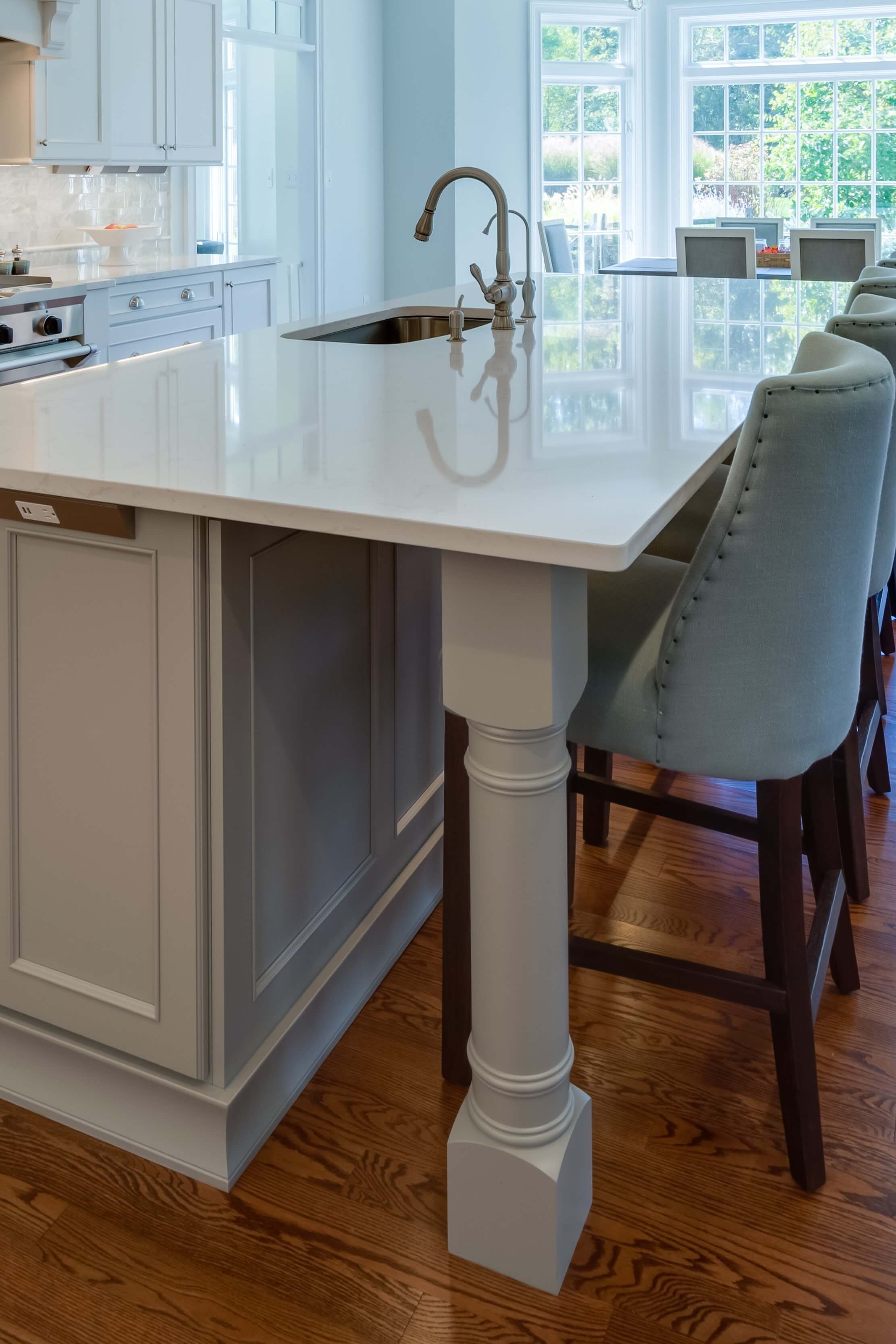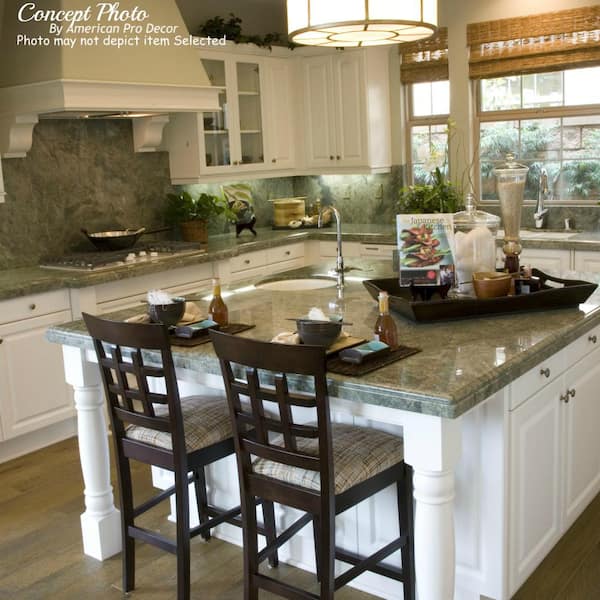Trick Considerations for Finding the very best Legs For Kitchen Island for Your Layout
When selecting the suitable legs for your kitchen island, a number of vital considerations come into play that can dramatically impact both performance and aesthetics. The option of style, height, and product have to align with your overall kitchen area layout to make certain a harmonious look.
Determine Your Style Choice
When selecting the optimal legs for your cooking area island,Establishing your design choice is essential. The legs of your kitchen island not only offer a practical objective yet additionally add significantly to the overall aesthetic of the space. For that reason, identifying your design style-- be it modern-day, rustic, conventional, or industrial-- is vital.
For a contemporary kitchen, consider sleek, minimalistic legs that enhance open areas and clean lines. On the other hand, a rustic setup might benefit from more durable, farmhouse-style legs constructed from redeemed materials. Conventional kitchens often prefer transformed or elaborate legs, which can add a touch of style and refinement. On the other hand, an industrial aesthetic could require metal legs that emphasize a raw, incomplete look.
In addition, consider the height and percentage of the legs in relationship to the island's surface area. Ultimately, your style preference will certainly influence not only the option of legs yet additionally the overall harmony of your kitchen area's style.
Select the Right Product
Picking the appropriate product for your kitchen island legs is pivotal in guaranteeing both longevity and visual allure. Numerous products offer distinct benefits, and the choice frequently reflects your design preferences and functional requirements.
Wood is a popular choice, providing heat and versatility. It can be tarnished or repainted to match your cooking area style, making it versatile to numerous designs, from rustic to contemporary. Wood may call for normal upkeep to maintain its look and stability.

If you seek an one-of-a-kind touch, take into consideration acrylic or glass products. They can produce an illusion of room and lightness in your kitchen area, making them a superb selection for smaller areas - Legs For Kitchen Island. Nonetheless, these options may call for mindful handling and maintenance to prevent scrapes.
Ultimately, the material you select need to align with your kitchen area's general layout, ensuring that the legs serve both practical and ornamental objectives.
Consider Height and Proportions
When creating a cooking area island, elevation and percentages play an essential function in guaranteeing performance and convenience. The standard elevation for a cooking area island typically varies from 36 to 42 inches, straightening with standard counter elevations or bar elevations, respectively. This dimension is important for harmonizing with surrounding feceses and counter tops, allowing ease of use throughout dish preparation and social interactions.
Additionally, the island's percentages have to match the general kitchen layout. A well-proportioned island needs blog here to not bewilder the space; rather, it needs to produce a balanced aesthetic. Take into consideration the ratio between the island's size and size, ensuring it provides appropriate surface without crowding the cooking area. A general guideline is to maintain a width of 24 to 48 inches, promoting movement and access.
In addition, the height of the legs or base can affect the visual allure and functionality. Taller legs might lend an extra modern, ventilated feel, while much shorter ones can stimulate a conventional, based appearance. Inevitably, thoroughly taking into consideration height and percentages will lead to a cooking area island that is both functionally effective and visually attractive, boosting the overall layout of the space.
Assess Stability and Longevity
A kitchen area island's legs need to not just complement its elevation and percentages but likewise give adequate stability and longevity to support daily tasks. The legs are necessary to the overall performance of the island, as they birth the weight of the kitchen counter and any additional tons, such as devices or food prep have a peek at this site work jobs.
When assessing stability, it is critical to consider the leg design and material. As an example, strong steel or strong wood legs often offer exceptional stamina compared to lighter materials like engineered wood or plastic. In addition, a bigger base can boost security, minimizing the danger of tipping or tottering throughout use.
Sturdiness is similarly crucial; the legs must withstand deterioration from everyday use. Take into consideration coatings that shield versus scratches, dents, and moisture, specifically in a cooking area atmosphere. Moreover, assess the quality of construction, such as joints and attachments, which can substantially affect the legs' long-term efficiency.
Inevitably, purchasing well-crafted legs that prioritize security and toughness will guarantee your kitchen island continues to be a trustworthy work area for years ahead, improving your cooking experiences while preserving visual charm.
Consider Upkeep and Care
Upkeep and care are essential considerations for ensuring the durability and efficiency of kitchen area island legs. When picking legs, it is necessary to evaluate the products used, as different alternatives require differing levels of upkeep. Wooden legs might require regular refinishing or securing to prevent wetness damages and scrapes, while metal legs may require normal brightening to maintain their luster and protect against rust.
Furthermore, the surface related to the why not look here legs can influence maintenance requirements. A high-gloss layer may be simpler to tidy yet can show fingerprints and scratches quicker than a matte coating. It is suggested to pick materials and finishes that match your way of life; for instance, if you regularly organize gatherings, opt for resilient materials that can stand up to deterioration.
In addition, take into consideration the cleansing procedure associated with keeping these legs. Smooth surface areas often require minimal effort, while intricate designs might accumulate dirt and crud, demanding even more labor-intensive cleansing techniques. Legs For Kitchen Island. Eventually, factoring in the maintenance and care required for your picked cooking area island legs will certainly not just improve their aesthetic charm yet likewise ensure their functional integrity over time
Conclusion
Finally, picking the ideal legs for a kitchen area island requires careful factor to consider of numerous aspects, including design style, product option, height, stability, and upkeep. Each element plays an essential role in making sure that the legs not only boost the visual appeal of the cooking area however also give the needed support and longevity for daily usage. An educated decision will inevitably add to a useful and visually pleasing cooking area atmosphere.
The legs of your kitchen island not only offer a practical objective however additionally contribute dramatically to the general visual of the area.Upkeep and care are important considerations for making certain the longevity and efficiency of kitchen island legs. Wooden legs might require regular refinishing or sealing to avoid dampness damage and scrapes, while steel legs might require routine brightening to maintain their luster and protect against rust.
Eventually, factoring in the upkeep and care required for your picked kitchen island legs will not just boost their aesthetic charm yet additionally ensure their practical honesty over time.
